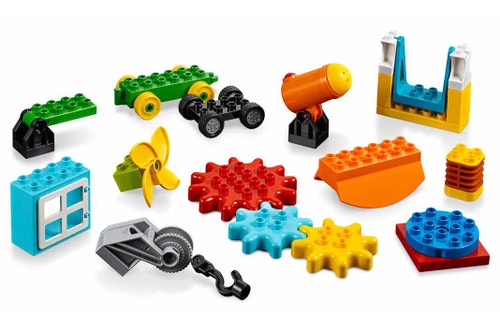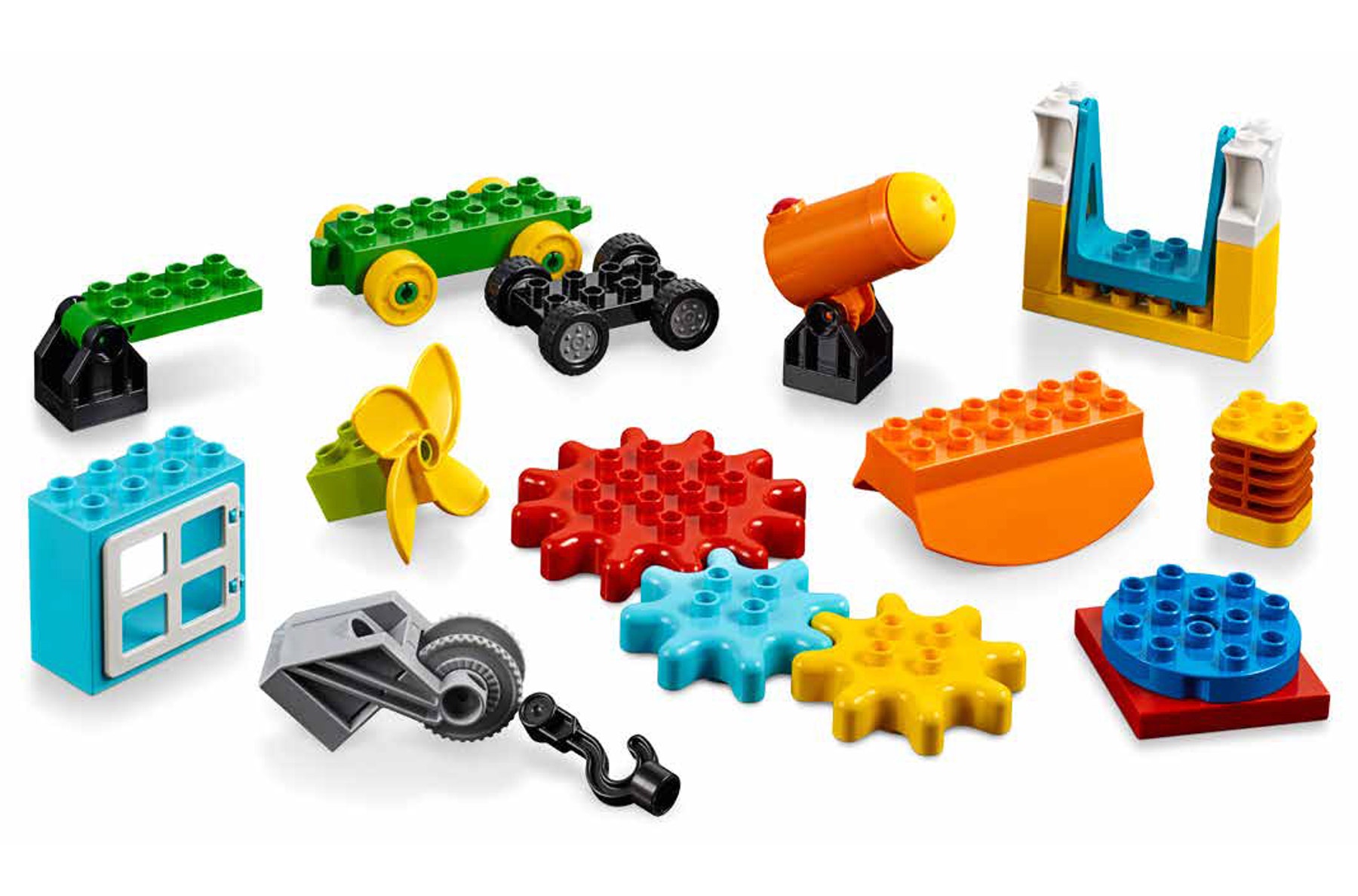Functional Elements
The objective of this lesson is to familiarize students with the special elements in the STEAM Park set.

Prepare
Review this lesson plan and choose what you need from the Teacher Support box.
If necessary, pre-teach these related vocabulary words: function, machine, gear, turntable, hinge, cannon, dart, accordion, cart, wheel.
Consider the abilities and backgrounds of all your students and decide when and how to introduce and differentiate lesson content, activities, or concepts.
Connect
Ask the students to name some things in the room that have moving parts (e.g., toys or furniture with wheels, curtains or blinds, doors, and scissors).
Explain that these things have a function or a job to do.
Ask the students to identify the functions or jobs of the moving parts they have named.
Construct
- Ask the students to explore all of the bricks and elements in the STEAM Park set.

Encourage them to use their imaginations and creativity to find all of the pieces that can be put together to make a functional or moving part.
Consider asking questions like:
What are the pieces called?
What would happen if you put some of the pieces together?
Tip: The functional elements include: one turntable, the swing and its frame, two orange rockers, the gears, the winches with the string and hook, one cannon, two darts, the carts with wheels, two hinged bricks, and two flexible accordion elements.
Contemplate
Encourage the students to take turns showing and telling the group how each of the functional elements works.
Consider asking questions like:
- How could you use this part?
- Have you seen other parts that move like this one? Where have you seen them? What were they used for?
Continue
Explain that a machine is made up of parts that use energy to do work.
Ask the students to name some machines they have seen (e.g., vehicles, computers, lawnmowers, elevators, coffee makers, toasters, and bicycles.
Ask the students to use some of the functional elements to build a machine that has a special purpose.
Ask each student to show you how his or her machine works and to tell you what it does.
Did you notice?
- Ask guiding questions to elicit students’ thinking and their decisions while ideating and building.
Observation Checklist
Review the learning objectives and educational standards addressed in this lesson (Teacher Support box).
Share specific student responses and behaviors at different levels of mastery.
Use the following checklist to observe students’ progress:
- Students build a machine that uses at least one of the functional elements for a specific purpose.
- Students can explain (describe) the purpose of their machine and what the functional element does in their machine.
- Students communicate how the functional elements in their design help meet the machine’s intended purpose, using the model of the machine they have built to help provided additional detail.
Teacher Support
Students will:
- Become familiar with the functional elements in the set
- Identify the movements of the functional elements
- Explore the idea that machines are made of moving parts
NGSS K-2-ETS1-2. Develop a simple sketch, drawing, or physical model to illustrate how the shape of an object helps it function as needed to solve a given problem
Extension:
CCSS.ELA-LITERACY.SL.K.5 Add drawings or other visual displays to descriptions as desired to provide additional detail.




